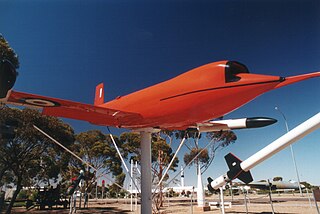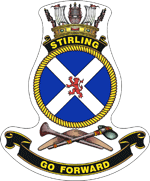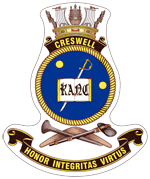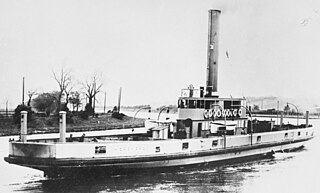| Jervis Bay Airfield | |||||||||||||||
|---|---|---|---|---|---|---|---|---|---|---|---|---|---|---|---|
| Summary | |||||||||||||||
| Airport type | Military | ||||||||||||||
| Operator | RAN | ||||||||||||||
| Location | Jervis Bay | ||||||||||||||
| Elevation AMSL | 200 ft / 61 m | ||||||||||||||
| Coordinates | 35°08′48″S150°41′48″E / 35.14667°S 150.69667°E Coordinates: 35°08′48″S150°41′48″E / 35.14667°S 150.69667°E | ||||||||||||||
| Map | |||||||||||||||
| Runways | |||||||||||||||
| |||||||||||||||
Jervis Bay Airfield( ICAO : YJBY) is a military aerodrome in the Jervis Bay Territory in Australia. It is the only aerodrome in the territory and is located about 10 km (6.2 mi) east of Sussex Inlet; and about 2 km (1.2 mi) south of Jervis Bay Village and HMAS Creswell.

The ICAOairport code or location indicator is a four-letter code designating aerodromes around the world. These codes, as defined by the International Civil Aviation Organization and published in ICAO Document 7910: Location Indicators, are used by air traffic control and airline operations such as flight planning.

An aerodrome or airdrome is a location from which aircraft flight operations take place, regardless of whether they involve air cargo, passengers, or neither. Aerodromes include small general aviation airfields, large commercial airports, and military airbases.

The Jervis Bay Territory is a territory of the Commonwealth of Australia. It was surrendered by the state of New South Wales to the Commonwealth Government in 1915 so the Australian Capital Territory would have access to the sea.
It was opened in 1941 as a satellite airfield of Royal Australian Air Force Base Nowra (now HMAS Albatross). It was primarily used to support torpedo training by No. 6 Operational Training Unit RAAF and search and rescue operations during World War II. During 1945 it was home to the Royal Navy Mobile Naval Air Base MONAB V (HMS Nabswick) and several Fleet Air Arm squadrons of the British Pacific Fleet.

The Royal Australian Air Force (RAAF), formed March 1921, is the aerial warfare branch of the Australian Defence Force (ADF). It operates the majority of the ADF's fixed wing aircraft, although both the Australian Army and Royal Australian Navy also operate aircraft in various roles. It directly continues the traditions of the Australian Flying Corps (AFC), formed on 22 October 1912. The RAAF provides support across a spectrum of operations such as air superiority, precision strikes, intelligence, surveillance and reconnaissance, air mobility, space surveillance, and humanitarian support.

Nowra is a town in the South Coast region of New South Wales, Australia. It is located 160 kilometres (99 mi) south-southwest of the state capital of Sydney With its twin-town of Bomaderry, as at the 2016 census, Nowra had an estimated population of 35,795. It is also the seat and commercial centre of the City of Shoalhaven. Geologically, the city is situated in the southern reaches of the Sydney basin.

HMAS Albatross is the main naval air station for the Royal Australian Navy's (RAN) aviation branch, the Fleet Air Arm. The base, located near Nowra, New South Wales, was formally established in May 1942 as Royal Australian Air Force (RAAF) base RAAF Nowra, then was transferred to the Royal Navy as HMS Nabbington in 1944, and operated as a naval air station until it was decommissioned in late 1945. In 1948, the airfield was commissioned into the RAN as HMAS Albatross, as the primary shore base for the Fleet Air Arm. Since 2011, four squadrons of the Fleet Air Arm operate from Albatross. The current commander of the base is Captain Fiona Sneath, RAN.
The airfield was transferred to the Royal Australian Navy (RAN) in 1948. It continued to be used as a base for the RAN's GAF Jindivik pilotless target aircraft. Today the RAN's British Aerospace MQM-107E Kalkara Flight is based at the airfield, along with the RAN School of Ship Survivability and Safety that has fire and damage control (flooding) training facilities.

The Royal Australian Navy (RAN) is the naval branch of the Australian Defence Force. Following the Federation of Australia in 1901, the ships and resources of the separate colonial navies were integrated into a national force, called the Commonwealth Naval Forces. Originally intended for local defence, the navy was granted the title of 'Royal Australian Navy' in 1911, and became increasingly responsible for defence of the region.

The GAF Jindivik is a radio-controlled target drone produced by the Australian Government Aircraft Factories (GAF). The name is from an Aboriginal Australian word meaning "the hunted one". Two manually-controlled prototypes, were built as the GAF Pika as a proof of concept to test the aerodynamics, engine and radio control systems, serialled A92-1/2, 'B-1/2'. The radio-controlled Jindivik was initially designated the Project B and received serials in the A93 series. Pika is an Aboriginal Australian word meaning flier.














